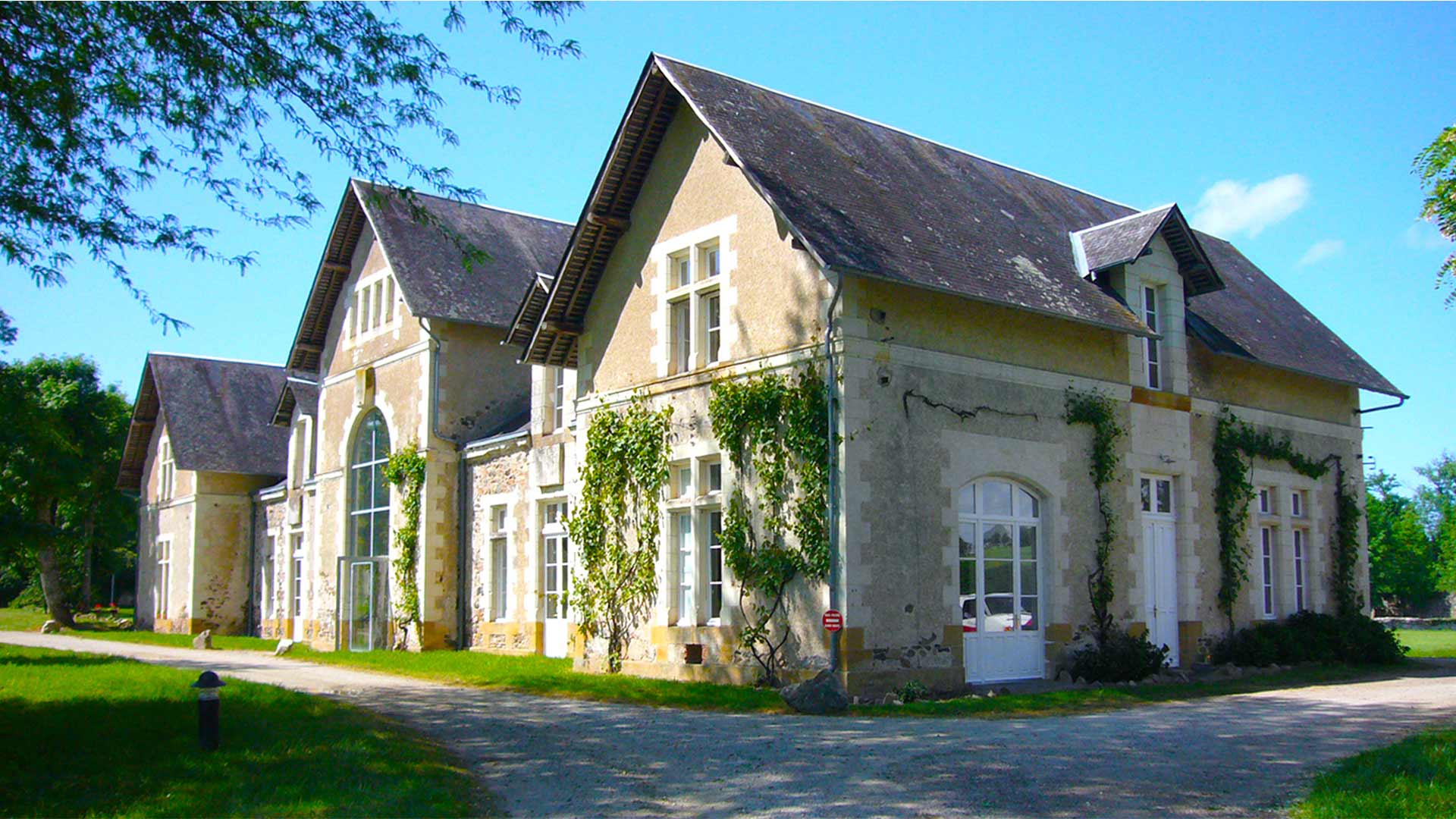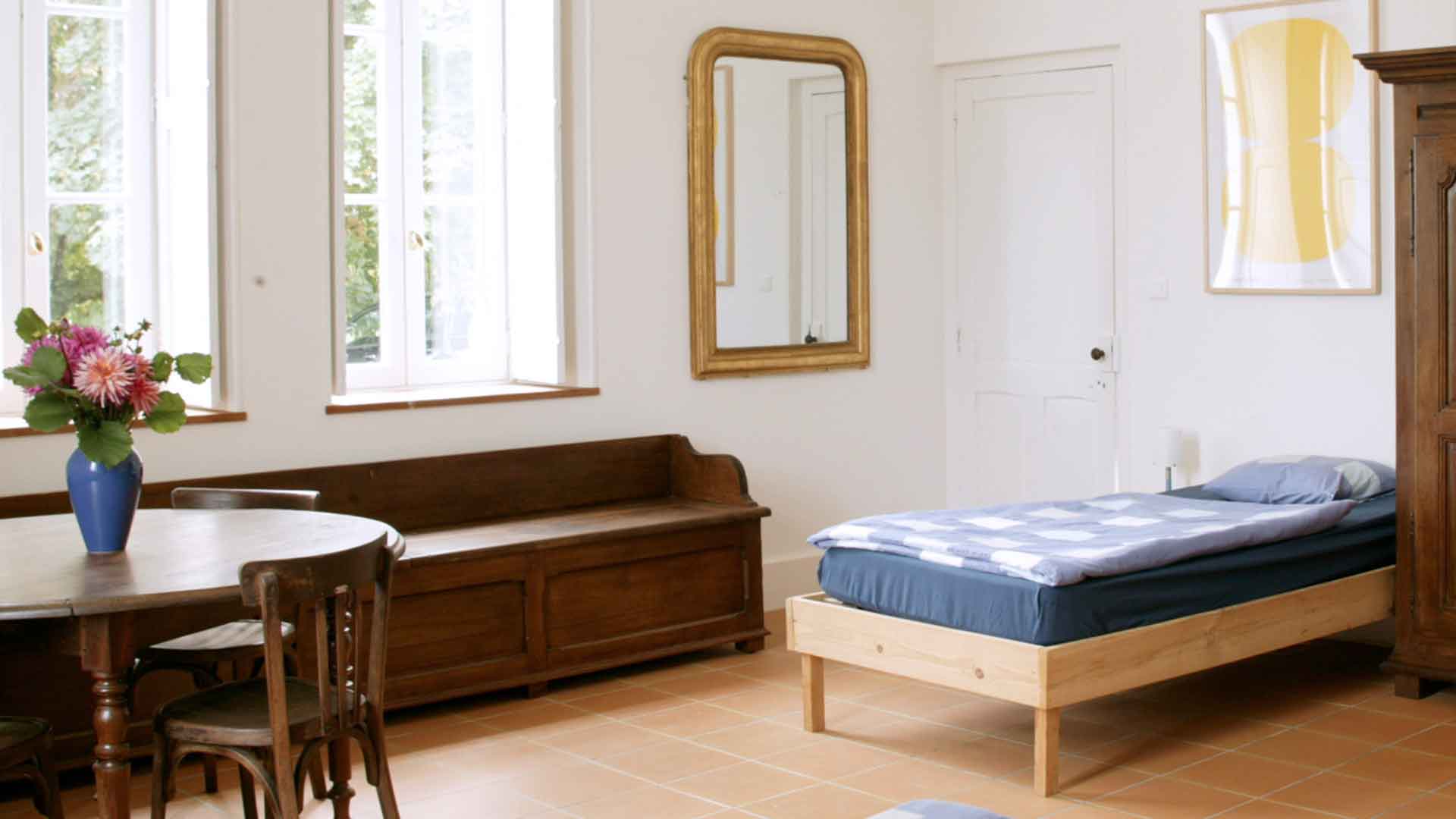Michelangelo Foundation + Domaine de Boisbuchet
Summer School 2022 “Introduction to Japanese Carpentry”
Tuesday, June 21st – Saturday, July 2nd 2022
Domaine de Boisbuchet, along with the Michelangelo Foundation from Switzerland, invites motivated and talented students who want to improve their mastery of woodworking
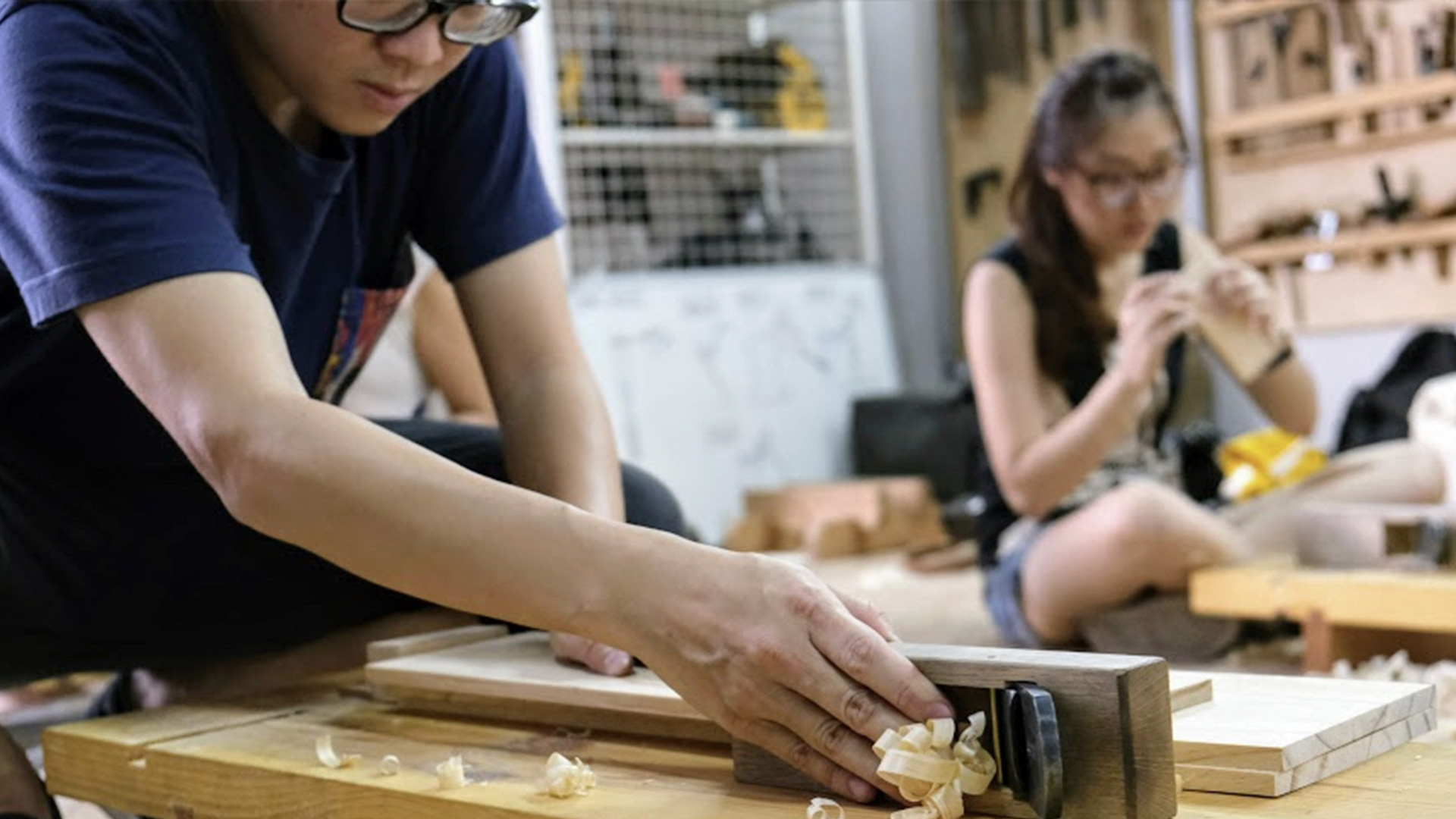
Workshop delivered in Singapore by Takami Kawai, 2020 ©Suikoushya
The Summer School
This one-of-a-kind Summer School on Japanese carpentry, co-organised by Domaine de Boisbuchet and the Michelangelo Foundation, will take place in Boisbuchet from Tuesday, June 21st to Saturday, July 2nd, 2022.
Guided by the Japanese master artisan Takami Kawai, you are invited to delve into the world of traditional Japanese joining techniques. The school will start with an introduction to the traditional woodworking tools followed by learning some of the most characteristic joints of this timeless craft.
Guided by an expert designer, you will continue the course by applying the acquired knowledge in the creating of objects of different scales, both individually and collectively. Your results will be shown at the end of the course in the Domaine.
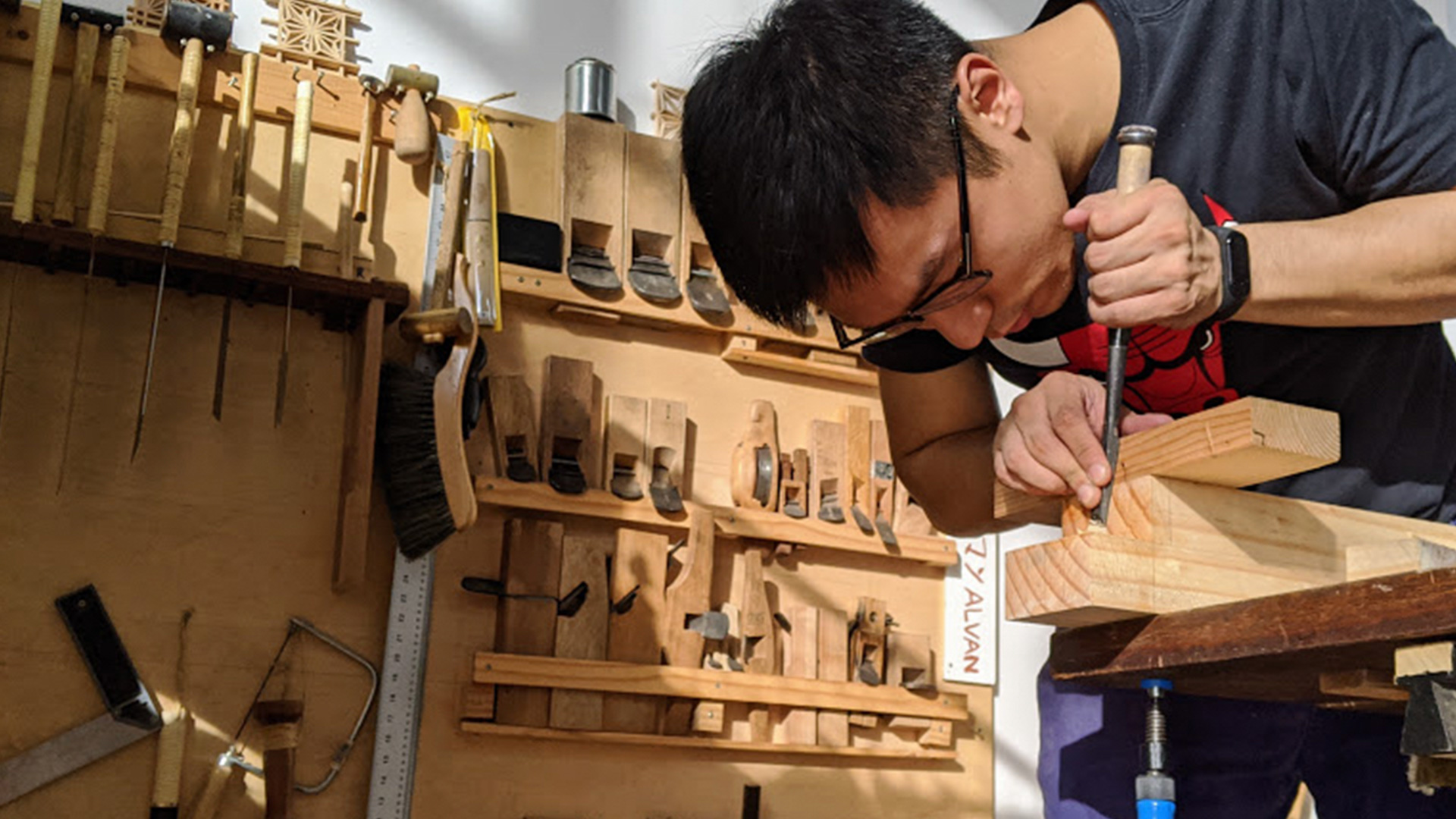
Workshop delivered in Singapore by Takami Kawai, 2020 ©Suikoushya
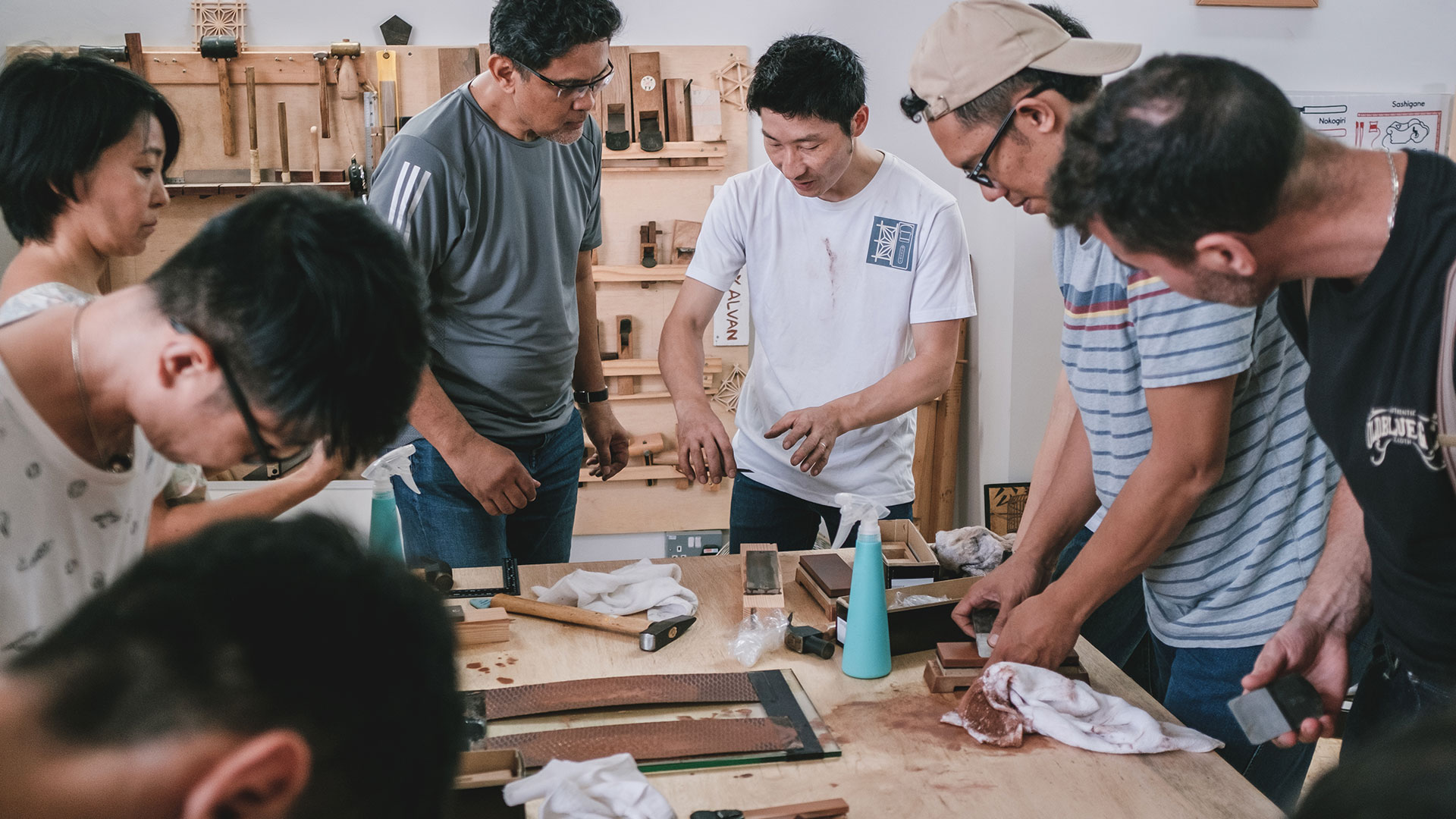
Workshop delivered in Singapore by Takami Kawai, 2019 ©Suikoushya
How to apply?
Applications are open from Friday, 15 April to Sunday, 15 May 2022.
To apply you should be:
- Over 18 years old at the time of application.
- A young craftsperson or a young designer/architect with a strong interest in craftmanship.
- Hands-on experience in carpentry.
- A student or a young graduate (graduated less than a year ago).
- Good knowledge of English (minimum B2).
- Able to attend the whole course.
- Based in Europe and be able to travel in Europe at the time of course.
Thanks to the support of Domaine de Boisbuchet and the Michelangelo Foundation all the costs of the Summer School from Tuesday, June 21st to Saturday, July 2nd, 2022 are covered, including transport in Europe, on-site accommodation, full board, tools, materials and tutoring.
Introduction to the Craft
Without using a single screw, nail, bolt, or other metal hardware, Japanese woodworkers use joinery – wood-to-wood connection – to build furniture, buildings, and ornate temples with the strength and durability to weather hundreds of years. Everything is held together with compression: the tightness of the joint against the end grain of the wooden recess. Using this all-natural technique, structures are much stronger and more flexible.
Japanese carpentry was developed more than a millennium ago through Chinese architectural influences and it’s based on the use of woodworking joints.
This summer school allows you to learn firsthand, under the guidance of a Japanese master carpenter, the secrets of this centuries-old tradition. The practical introduction to the principles of Japanese carpentry will equip participants with a range of skills and knowledge that they will later be able to apply to their own work.
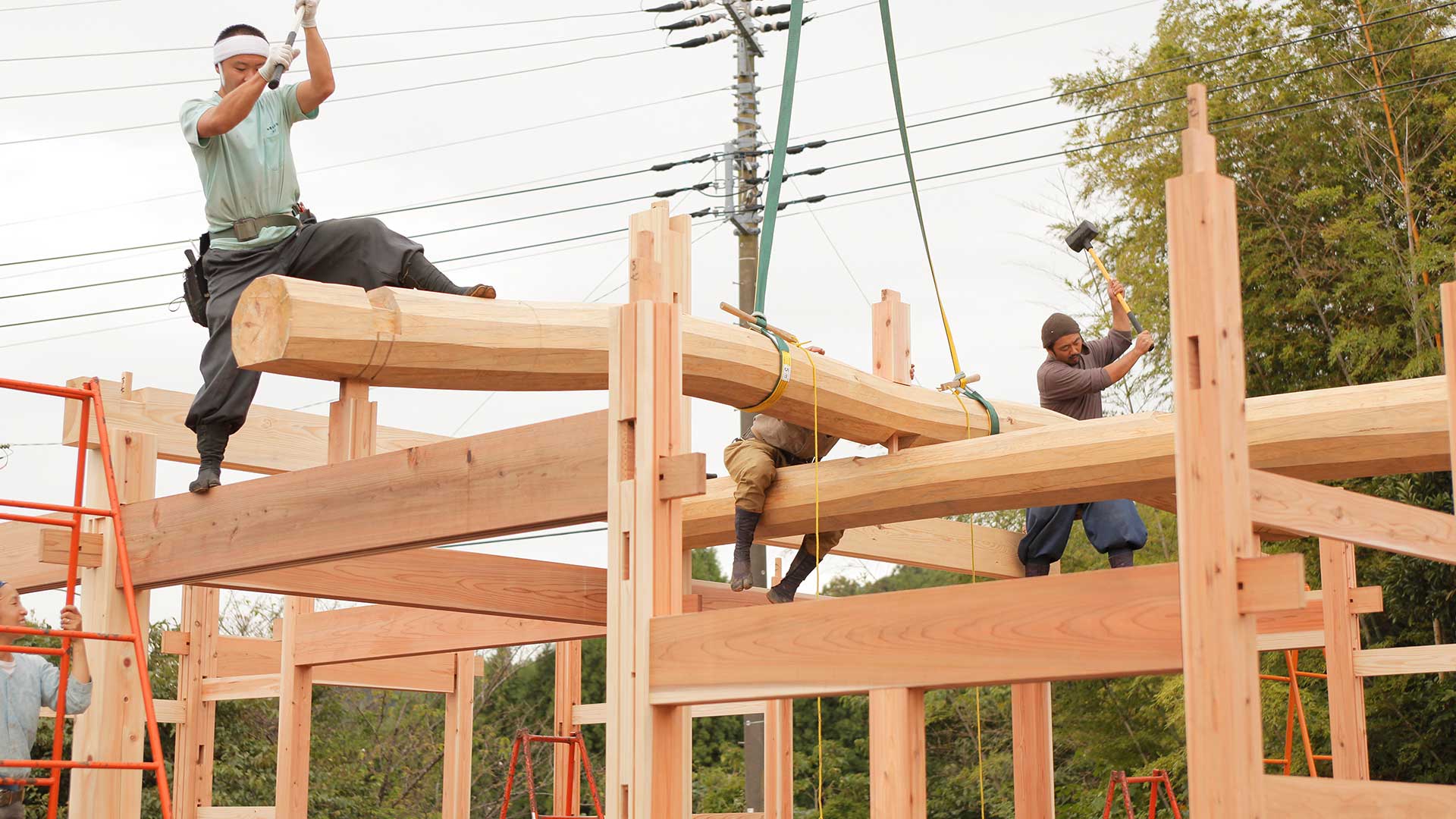
Erection of the framework of the Kamogawa House, Makoto Fukawa ©Ken Kusakari, JTBAU
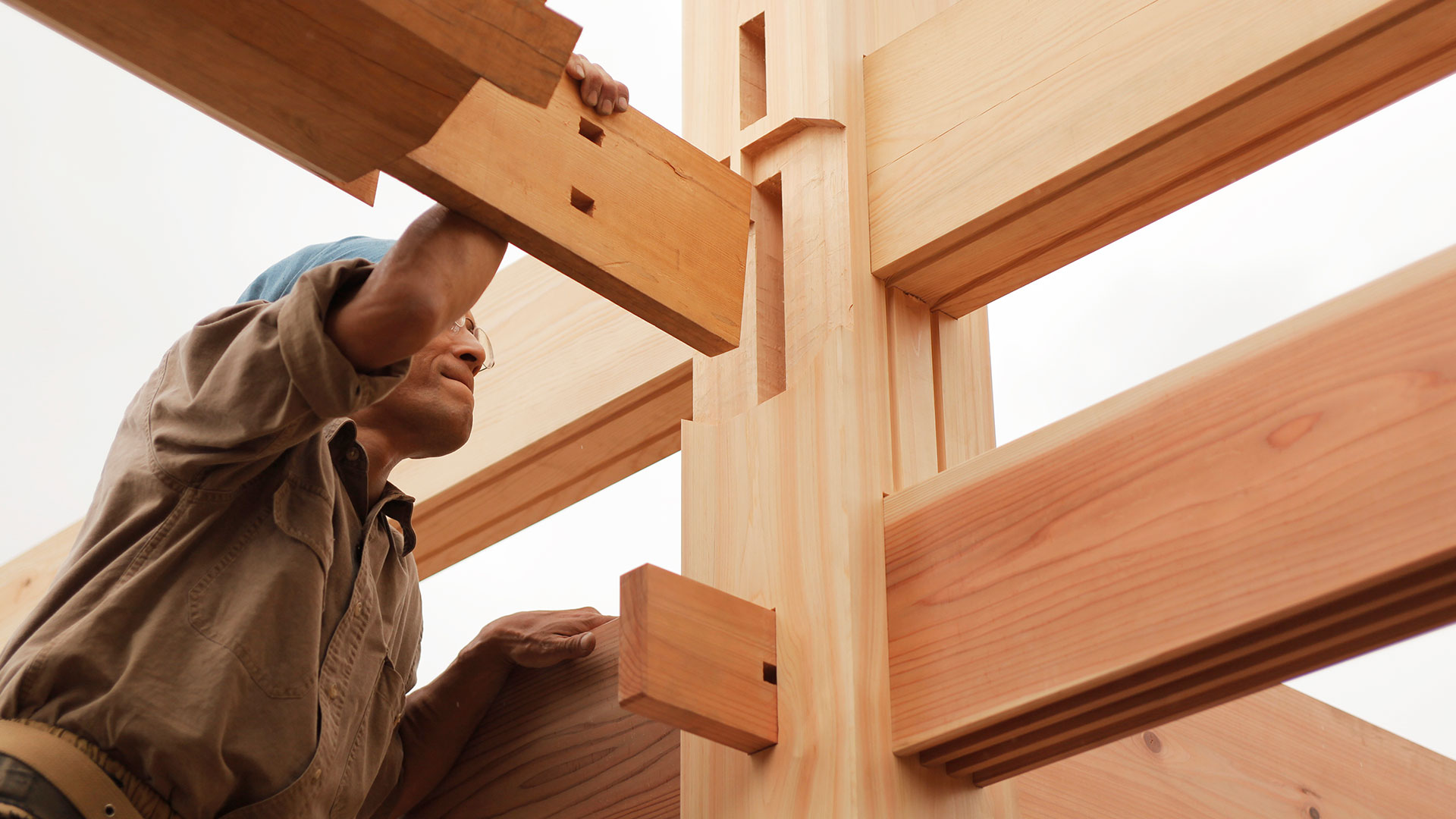
Erection of the framework of the Kamogawa House, Makoto Fukawa ©Ken Kusakari, JTBAU
Tools and Techniques
Tools and Techniques
The use of hand tools and joinery embodies a preindustrial approach to woodworking and architecture that is deeply rooted in Japan’s cultural past. Ranging from saws (noko-giri), planes (kanna), chisels (nomi), marking gauges (kebiki), and stones (ishi), this repertoire of hand tools “rewards woodworkers with a satin smooth nish that reveals the natural beauty of the wood”. Wielding these age-old methods and dedicating innumerable hours to each project, traditional Japanese woodworkers are able to create works of art that not only align with the natural world, but can also last much longer than the more expedient postindustrial methods. Although this traditional craft is fundamentally simple, woodworkers must be very precise when carving the wood to ensure that each piece fits together perfectly.
Program
The introductory course in Japanese carpentry will be divided into two parts:
- For the first six days, under the supervision of master carpenter Takami Kawai, you will be introduced to the secrets of this centuries-old craft.
- Then, during the following four days, you will have the opportunity to apply what you have learned during the school in the creation of simple objects.
Further activities during the Summer School:
- The summer school will begin with a guided tour of the architectural park of the Domaine, which includes a traditional 19th century Japanese guest house (Kyakuden), a Paper Pavillion by Shigeru Ban, as well as several examples of vernacular architecture from different building traditions.
- During the summer school, special dinners, as well as an opening and a closing event, will be organized at different locations of the Domaine.
- In the evenings a series of lectures will be given by the participating artisan and designer as well as by guest speakers.
- A few hours will be set aside for a visit to Alexander von Vegesack’s archive and personal library at the Domaine, with more than 25,000 publications on architecture, design, art, and crafts. A large number of publications on woodworking and Japanese tradition can also be found.
The program is subject to change.
Tutors
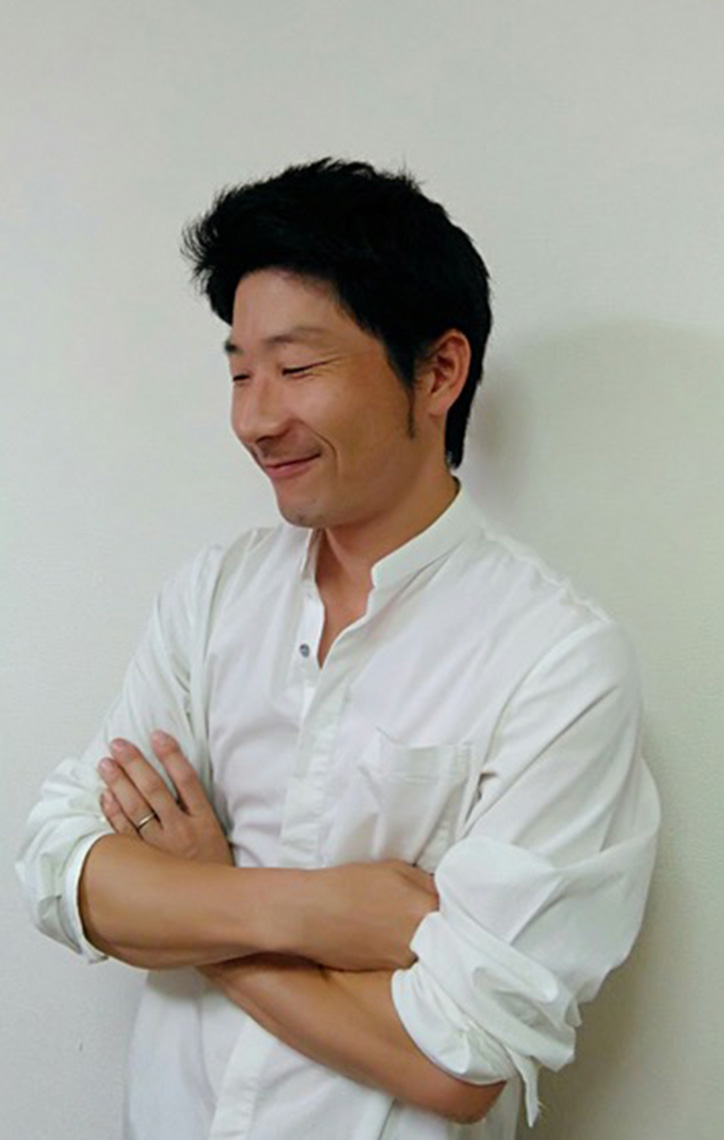
Takami Kawai
Takami Kawai, is a master in traditional Japanese carpentery. He repairs shrines and renovates traditional wooden houses. In addition to that he holds woodworking classes around the world where he shares his mastery in fine woodworking. He also organizes solo exhibitions about wooden joinery.
Takami decided to become a carpenter at the age of 10, thanks to the influence of his great-grandfather Kanjiro Kawai, who was a potter and artist. In Miyama-cho, Kyoto, known as “Kayabuki no Sato”, he started a carpenter’s apprenticeship to protect the original scenery of old Japan. After several years of practice, in 2018 he launched a crowdfounding campaign to create a Japanese woodworking school that is taught in English. With the support from people around the world, he founded Suikoushya, a woodworking school in Kyoto, Japan. From where he shares the best woodworking techniques with people from around the world.

Wataru Kumano
Wataru Kumano is a Japanese designer. After studying furniture design at the Lahti Polytechnic and completing his postgraduate studies at the University of Art and Design Helsinki (Aalto Univeristy), he started working as an assistant designer of British product designer Jasper Morrison in Tokyo from 2008 to 2018. In 2011, he set up his own international design office ‘kumano’, working with interiors, furniture, and product design. In 2021, he was inaugurated associate professor at Musashino Art University.
*Tutors and lecturers program will be completed over the next few days
Site
The Domaine de Boisbuchet is an international centre for workshops, research and education on innovative design and architecture. Founded in 1986, it is located in the Southwest of France on 150 hectares of protected nature and ecological agriculture. Renowned contemporary architects have realized over 20 innovative buildings on this terrain, which today constitute a unique architectural park that provides exceptional locations for workshops, residencies and other events.
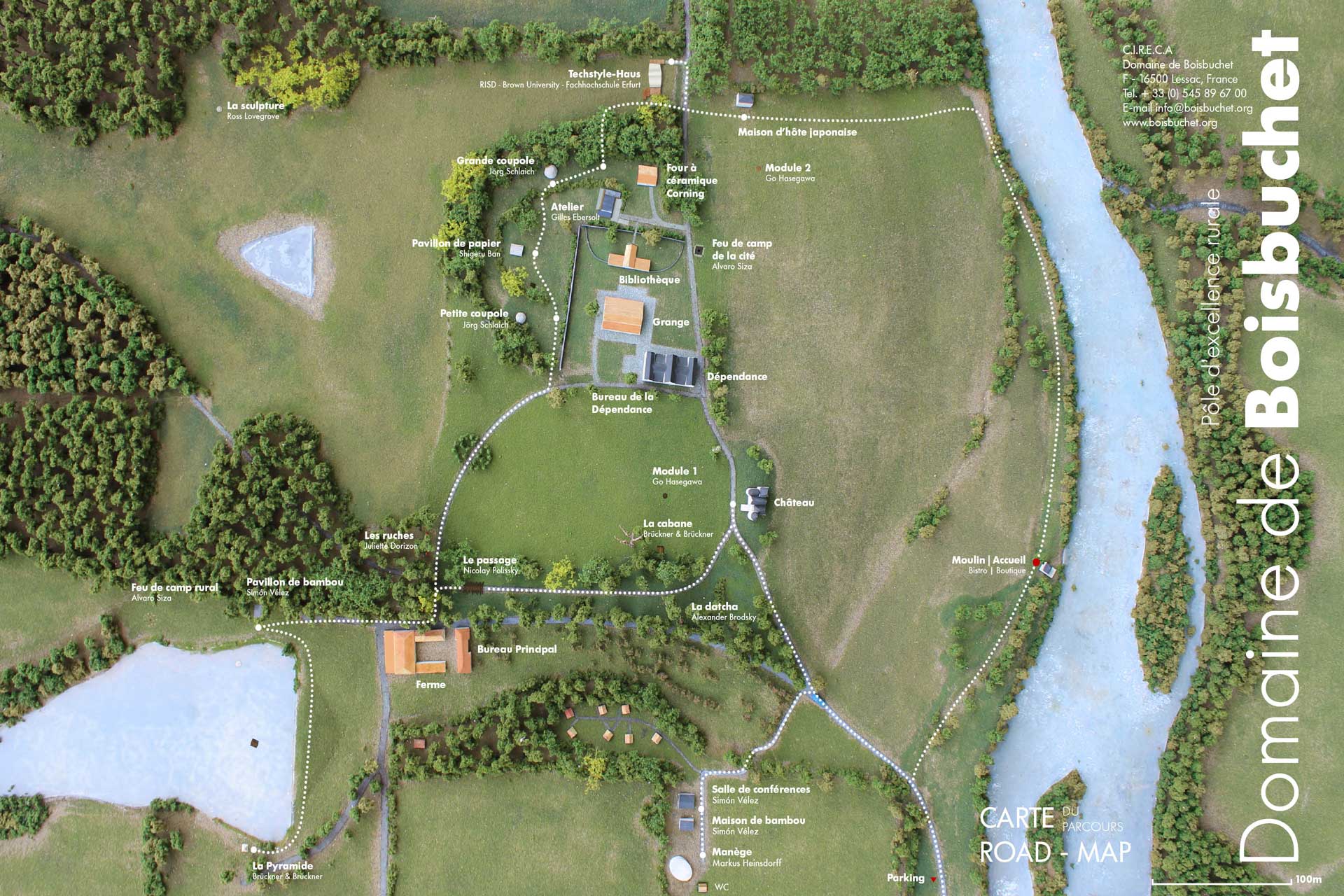
Context – Japan’s influence in Boisbuchet
Context – Japan’s influence in Boisbuchet
Boisbuchet’s traditional Japanese Guesthouse
Part of Boisbuchets architectural park is a traditional Japanese guesthouse (Kyakuden). Once part of a large estate in the Shimane prefecture in Western Japan, it was constructed in 1863 – the same period as the Chateau at Boisbuchet. Offered as a gift by the Japanese Kominka Research Society, it was dismantled, documented and restored in its original location in 2008, then brought to the Charente, where it was faithfully rebuilt by a team of Japanese craftsmen. Assembled without nails or screws, the wood and clay structure encompasses two large rooms and an L-shaped corridor, which are divided from one another by shojis.
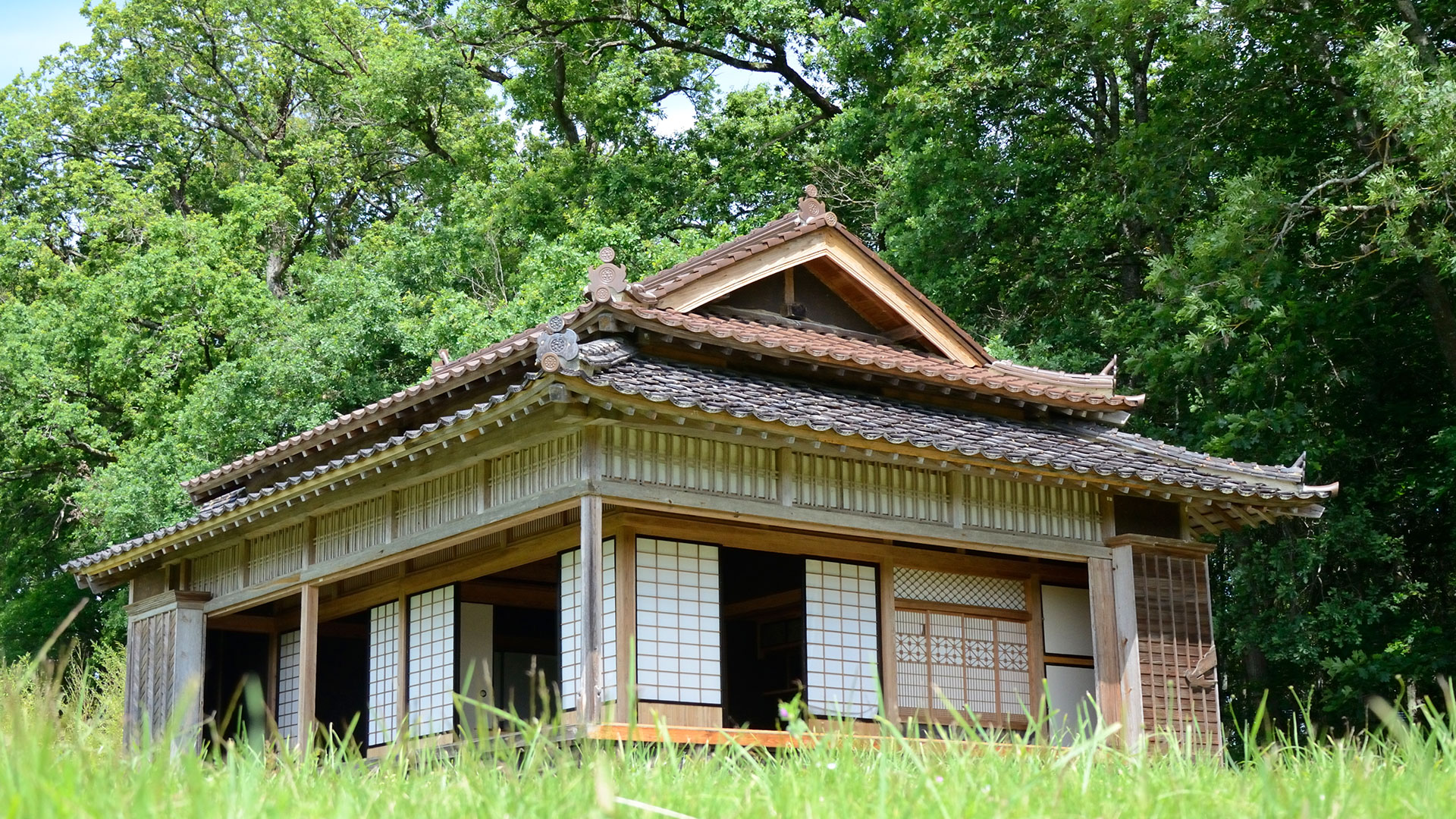
The Collection of Alexander von Vegesack
Japan is one of the main themes within the extensive collection and library of Alexander von Vegesack, the founder of Domaine de Boisbuchet. A large selection of original furniture, objects, models, fabrics and publications will be on display for students to reference.
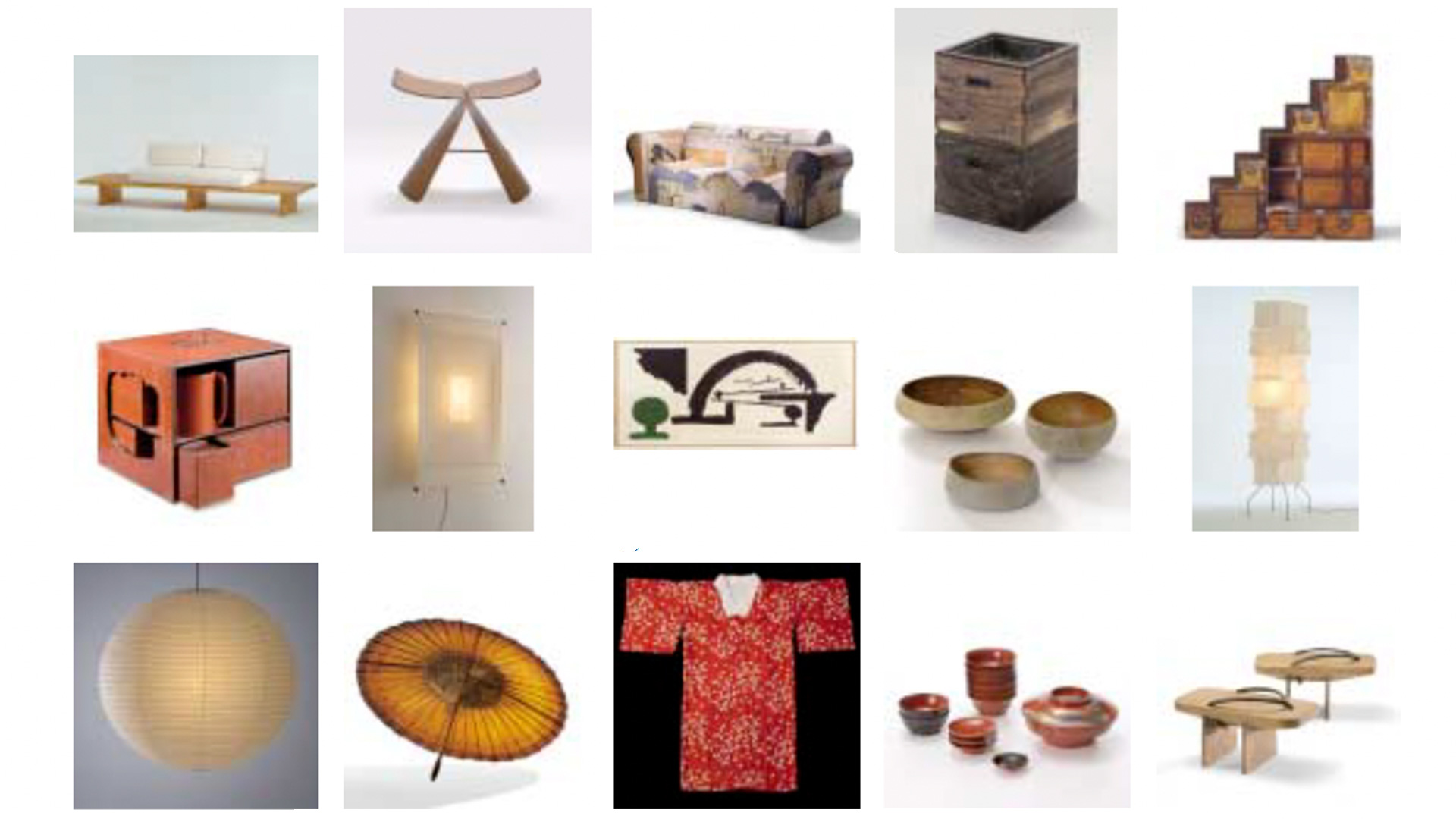
Workshop
Boisbuchet’s workshop offers all kinds of tools and space to work with wood, metal, ceramics and many other materials. Larger wood work is available and large machinery can be used under the guidance of one of Boisbuchet’s technicians.
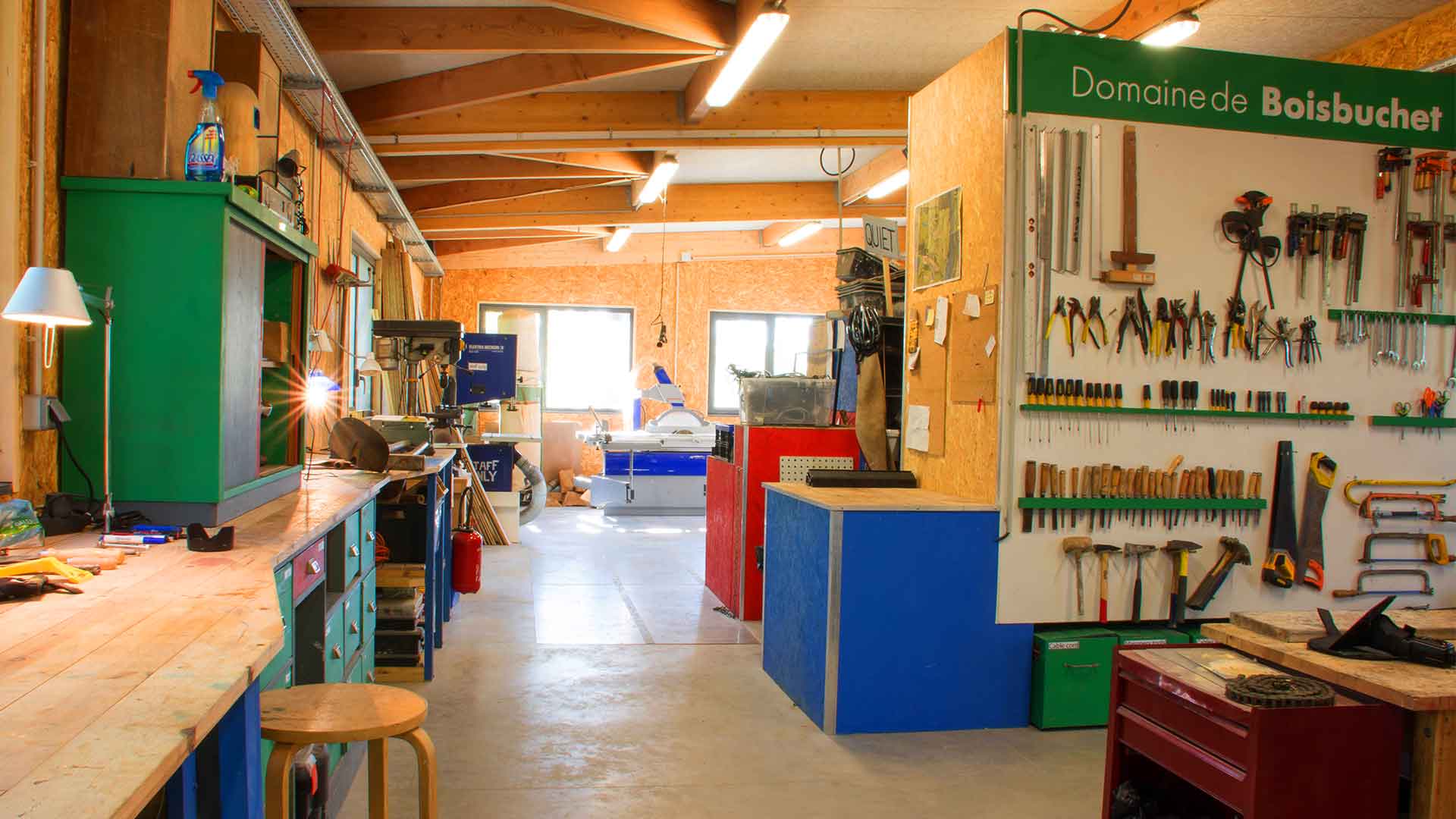
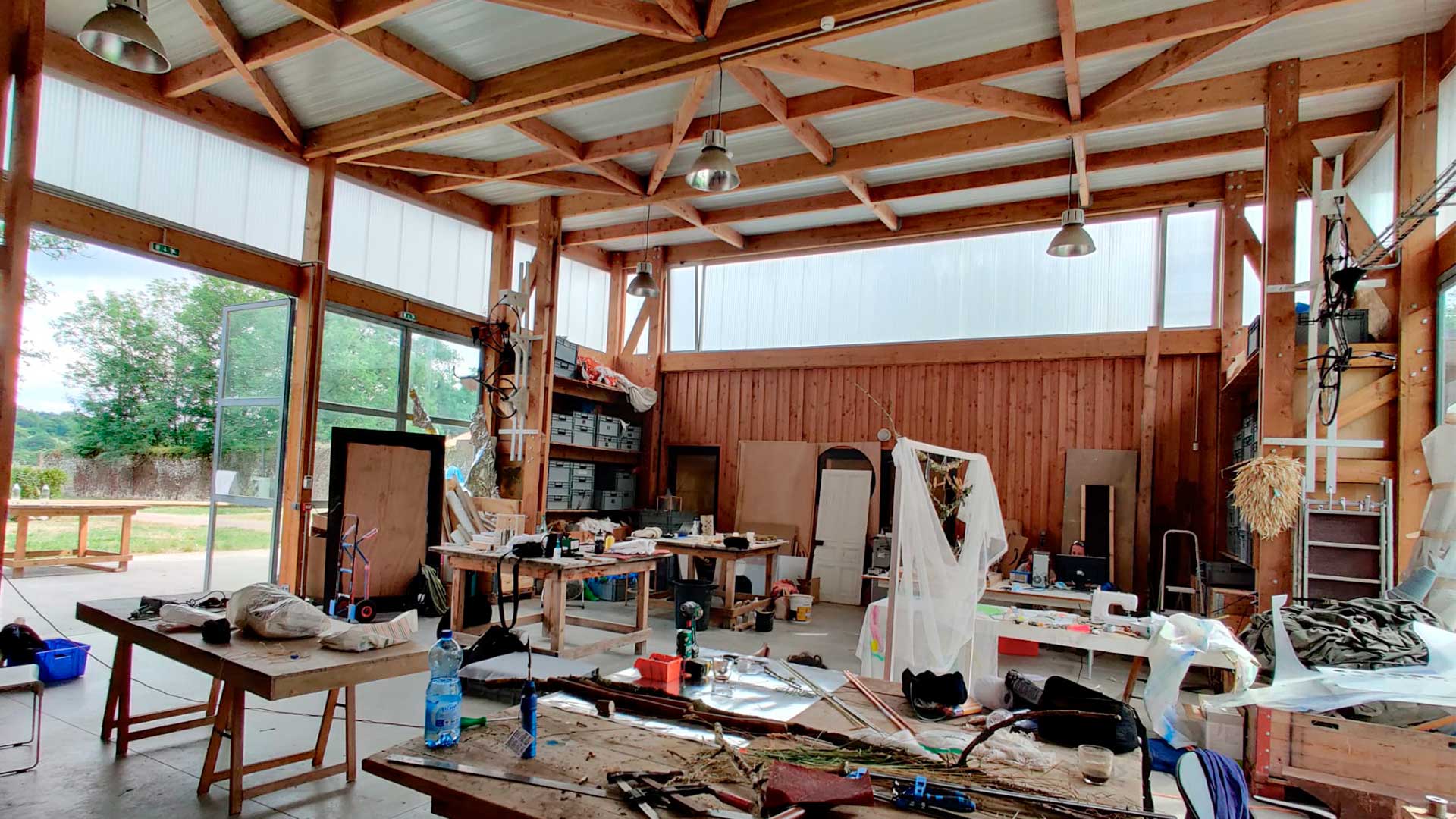
Accommodation
All students will be accommodated in the Dépendance, a 19th century building which now is Boisbuchet’s main guesthouse. All rooms have their own washrooms (WC/shower) and are fully furnished.
